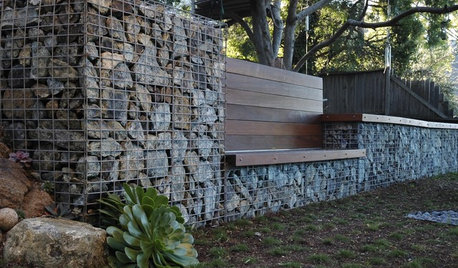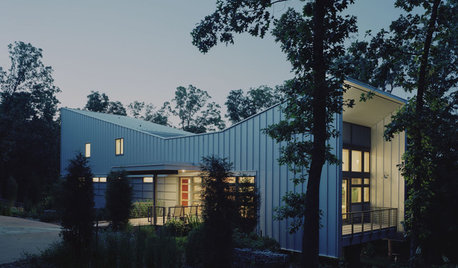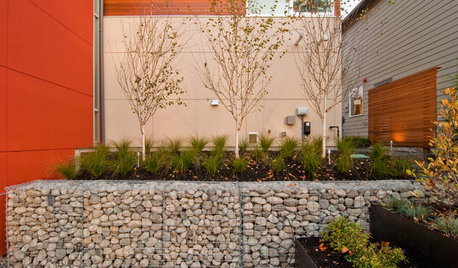Railroad tie wall
GilBagnell
11 years ago
Related Stories

GARDENING AND LANDSCAPING7 Out-of-the-Box Retaining Wall Ideas
Go Beyond Railroad Ties With Stylish Rock, Metal, Blocks, and Poured Concrete
Full Story
DECORATING GUIDESTwist Up a Room's Look With Tie-Dye
Dip into the organic patterns of tie-dye for one-of-a-kind style that can be — yes, you're hearing it right — thoroughly modern
Full Story
DECORATING GUIDES8 Ways to Decorate With Indigo Tie-Dye
Make a statement big or small using this fabric rooted in an ancient Japanese art form
Full Story
Woven Wood Shades Tie Rooms Together
Contrasting sharp modern edges or complementing a contemporary look, these window shades are a lovely finishing touch for any room
Full Story
CONTEMPORARY HOMESHouzz Tour: Dressed Up With a Bow Tie in Arkansas
Shaped just like its name, this home responds to the lay of the land along with the client’s needs
Full Story
LOFTSHouzz Tour: Tying Together a Boston Loft
Walnut and other elements weave throughout a family’s condo, filled with multipurpose spaces and newly maximized views
Full Story
DECORATING GUIDESRetro Chic: The Return of Tie-Dye Decor
See how this psychedelic trend is making its mark in home decorating
Full Story
WINDOW TREATMENTSThe Drapery Diary: Tab and Tie Tops
Discover the best ways to work these casual curtain styles into your home
Full Story
LANDSCAPE DESIGNGarden Walls: Gabion Evolves From Functional to Fabulous
The permeable rock-, concrete- or glass-filled steel cages are showing up as retaining walls, planters, benches and more
Full Story
DECORATING GUIDESWeave Raffia Into Your Interiors for Natural Appeal
Still tied to the idea of raffia for just gift wrapping? You're missing out on gorgeous fabrics, accessories and even wall coverings
Full Story








puffie
Yardvaark
Related Professionals
Mountain Brook Landscape Architects & Landscape Designers · Piqua Landscape Architects & Landscape Designers · East Hanover Landscape Contractors · Eustis Landscape Contractors · Reedley Landscape Contractors · River Ridge Landscape Contractors · Royal Oak Landscape Contractors · Tamarac Landscape Contractors · Algonquin Decks, Patios & Outdoor Enclosures · Crystal Lake Decks, Patios & Outdoor Enclosures · Fredericksburg Decks, Patios & Outdoor Enclosures · Lebanon Decks, Patios & Outdoor Enclosures · Pittsburgh Decks, Patios & Outdoor Enclosures · Claremont Swimming Pool Builders · Conroe Swimming Pool Buildersmarcinde
GilBagnellOriginal Author
marcinde
arclink
Yardvaark